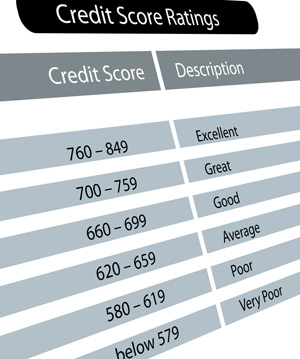Fico Schmico
 Why should you care?
Why should you care?
Leo Rosten, New York playwright, tells a story regarding a lady who had, for some time, frequented the same restaurant. On one particular occasion, the lady visited the restaurant, sat at her usual table and was served by her usual waiter. The waiter first delivered the salad, which the lady ate. The waiter then removed the remnants of the salad and, as usual, placed before her a hearty bowl of chicken soup.
As the waiter walked away, the lady called out, “Waiter!”
“How may I assist you?” replied the waiter.
“Please taste this soup,” said the lady.
Displeased, the waiter said, “It’s the chicken soup you always have.”
“Taste it,” said the lady.
“Madam, in all the years you have been coming here, have you ever had a single bad bowl of chicken soup?” asked the waiter.
“That is not the point,” said the lady. “Taste the soup!”
“Alright Madam, I will taste the soup,” said the waiter. “So where is the spoon?”
“Exactly,” replied the lady.
It is important for business owners and officers to understand that rarely do fancy products, gimmicks and catchy slogans facilitate excellence. A tasty bowl of chicken soup without a spoon rarely impresses anyone. If excellence is to be achieved, a business owner must pay attention to the details. Vince Lombardi, the legendary coach of the Green Bay Packers, said, “Excellence is achieved by the mastery of fundamentals.”
One of the most overlooked fundamentals is a business owner’s personal credit score. Because many know and understand the business owner’s credit score, and use this information to judge the financial health of both the owner and the business, it becomes imperative that the owner understand the score. The credit score is a number, usually between 300 and 850. The average score typically falls between 675 and 723. Many times, a business owner’s score will fall between these two numbers and the owner will think, “So what, my score is no worse than anyone else and better than some.”
This “no worse than anyone else” mentality is extremely detrimental to both personal and business excellence. Consider the plight of Neil Armstrong, the first man to walk on the moon. When asked if he was nervous about his historic trip into space, he replied, “Who wouldn’t be? There I was sitting on top of 9,999 parts and bits—each of which had been made by the lowest bidder!” Nowhere is this willingness to accept mediocrity more evident than the business owner’s understanding of his or her credit score and what goes into creating the credit score.
The credit score, which is also known as a FICO score, is a numerical interpretation of information contained in a credit report. This report is written by various credit bureaus (the big three being Experian, TransUnion and Equifax) and is based on information gathered from creditors. Payment history, length of credit history and types of credit are the report’s three main focuses.
Payment history is by far the most important of these categories. Information is gathered concerning credit card payments, payments on installment loans, mortgages and/or other types of finance company accounts, in addition to public record items such as liens (primarily tax liens), unsatisfied judgments, bankruptcies and other types of collection activity (such as child support orders). The timing of payments is an important consideration. Obviously, late and missed payments do not bode well for an improved credit score. According to Fair Isaac Corporation, the company for which the FICO score was named, the payment history category determines approximately 35 percent of the credit score.
Consideration of outstanding debt is often included in the payment history category. The key questions focused on here are: how many accounts are reported, what is owed on the accounts and how much credit is available for use? When combined with the payment history category, Fair Isaac reports that these areas will determine about 65 percent of a credit score.
Consideration of credit history follows the outstanding debt category, coming in a distant second. This category includes attempts at new credit, as the length of time spent in building a credit history is an important consideration. This does not mean a beginner cannot find success, but it does mean that those who extend credit, or make business decisions based on credit, prefer an established credit history as opposed to a new credit history. Keep in mind that payment history is the main driver. A substantial credit history in terms of time is of little value if the payment history is poor.
Closely aligned with credit history is the consideration of the number of attempts at new credit. Oftentimes, business owners will seek new lending relationships to increase a line of credit for additional working capital in order to buy a new piece of equipment, for example. Typically, these types of business owners will prepare a business plan and march off to the local bank to make the presentation. Unfortunately, each time the business owner performs this exercise, his or her credit score is at risk, as it could drop as much as five points. For the business owner with less than the perfect credit score, failure to pay attention to the fundamentals by taking “pot shots” at new credit could potentially lead to failed credit relationships or worse, failed business relationships. Fair Isaac reports these categories represent about 25 percent of the credit score.
Approximately 10 percent of the credit score is derived from the types of credit in use. For example, numerous credit card accounts that are nearing their maximum limits negatively affect the credit score. The number and types of accounts (credit cards, department store cards, installment loans, etc.), are considered in this category. Unfortunately, closed credit accounts may still appear in the credit report and may lower the credit score.
In addition to the credit score number, there are typically reasons provided regarding why the credit score is not higher. Aside from bankruptcy, the most common reasons for a lower credit score are late payments (a function of payment history), length of credit history and the number of credit inquiries. Bankruptcies are not considered in this article because a business owner who is contemplating bankruptcy has more serious financial matters to ponder and should attend to those rather than considering the effects such actions would have on a credit score.
The most common reason for a low credit score is late payments. The credit report will clearly indicate that a payment is 30, 60, 90 or more days past due. The reason behind the late payment is of little consequence, as a string of late payments shows lack of financial responsibility. Why would a creditor want to trust money to such irresponsibility? Why would a business want to enter into a professional relationship with such financial irresponsibility?
Solely maintaining new accounts will also cause a credit score go down. Those with only new or relatively new accounts will have a slightly lower credit score than those with older, more established accounts. Again, this concept should be closely tied to a consideration of responsibility. Time tends to reveal what lack of time cannot.
Numerous recent credit inquiries also contribute to lower credit scores. In a business setting, lenders are concerned with the trend. Why is this business owner trying to consistently establish new accounts? If these other institutions are not extending credit, why should I? Will this business owner shop my deal? If another institution is going to extend credit, why should I do the same? And the questions continue…
For the business owner who finds himself or herself with a lower credit score, or has the attitude that being “no worse than anyone else” is unacceptable, several actions can be taken. Make payments on time. Pay off smaller accounts, but leave them open. Continually closing old accounts is not a good idea. Instead, credit cards seldom used should remain open so lenders can see a longstanding credit history. On the other hand, credit cards, installment loans and other credit items should not be applied for unless absolutely necessary. Above all, the business owner should know what his or her credit report states and, since personal inquiries will not affect a credit score, inquiries should be made on a regular basis. The law now requires credit bureaus to supply a free credit report once per year; however, purchasing a credit report is a small price to pay to understand this vital fundamental.
Senator Richard Shelby, Chairman of the Senate Banking Committee, described the lack of awareness Americans have regarding their credit scores and the credit granting process as “troubling.” Senator Paul Sarbanes said understanding “is less than it ought to be” and added Americans ought to have the knowledge to access their credit scores and the understanding necessary to realize their importance. Sarbanes cited a report, submitted to the committee by the Consumer Federation of America (CFA), which states that as many as 75 percent of Americans claim they do not know their credit scores.
“This is indicative that there is a serious need to increase financial literacy and education,” said Sarbanes.
A business owner’s willingness to operate with the “no worse than anyone else” attitude when it comes to credit scores is baffling. For example, Travis Plunkett, the legislative director of the CFA, has stated the following to members of Congress:
“There has never been greater need for Congress to discuss how it can help boost overall financial awareness and improve financial decision-making by Americans, especially in regards to the credit reporting and credit granting process.”
Imagine receiving medical treatment, flying on an airline, building a home or improving a business through management consulting with a company claiming to be no worse than anyone else.
In a highly competitive business environment, knowing credit scores puts business owners at an advantage. Business owners can stay ahead of their competition by knowing their credit scores and taking actions to improve them. This advantage is much like the story of two backpackers who suddenly spotted a grizzly bear stalking them. One backpacker calmly sat down, took off her hiking boots and put on a pair of running shoes.
“What good will that do?” asked her friend. “You can’t outrun the grizzly.”
Lacing up her shoes, she responded, “I just have to stay ahead of you.”





